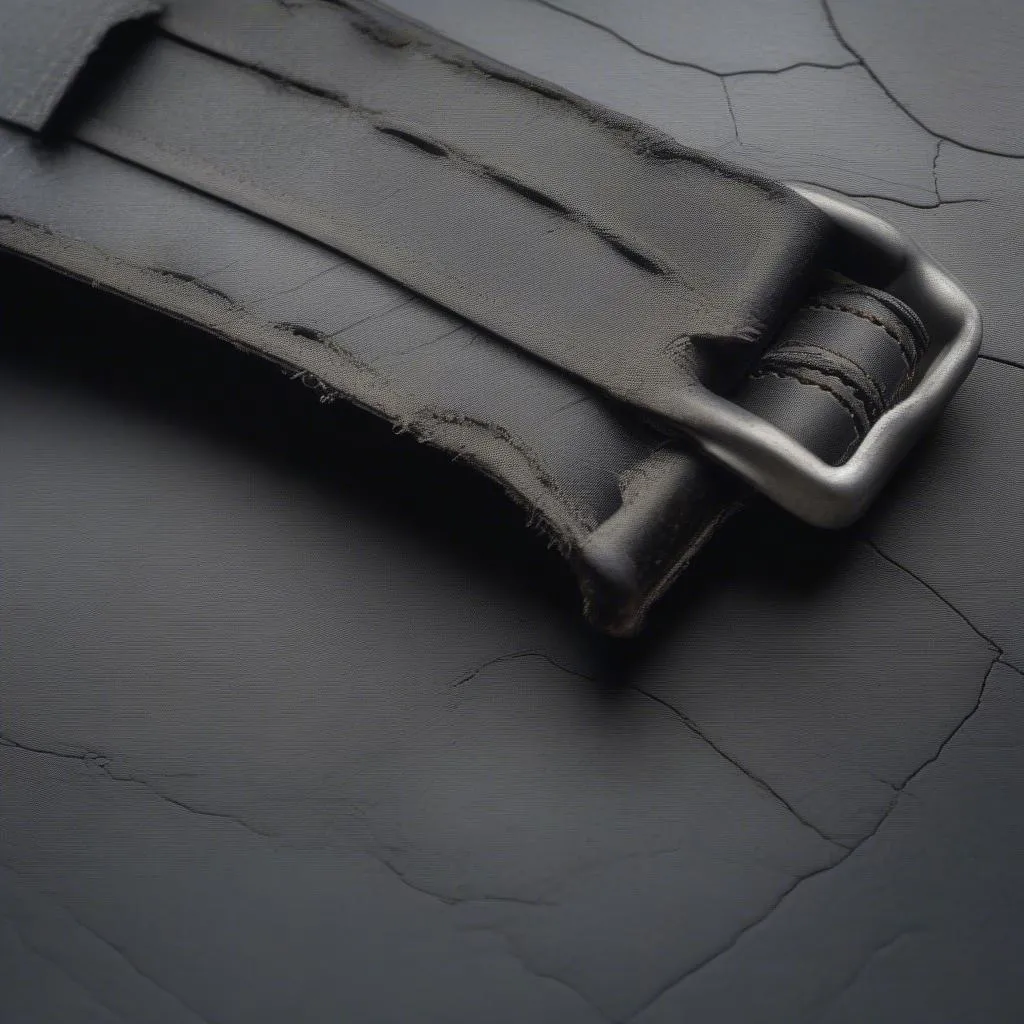Ever had your car make a strange squealing sound while driving? It could be a sign of a worn-out car belt. While it might seem like a small component, the car belt plays a crucial role in keeping your engine running smoothly. In this article, we’ll delve into the world of car belts, their functions, common problems, and how to maintain them for a seamless driving experience.
Why is the Car Belt So Important?
The car belt, also known as the serpentine belt or drive belt, is a rubber component that connects several vital components in your engine. Its primary function is to transmit power from the crankshaft to various accessories like:
- Alternator: The alternator is responsible for generating electricity to power your car’s electrical system.
- Power Steering Pump: This pump assists in steering your vehicle, making it easier to maneuver.
- Water Pump: This pump circulates coolant throughout the engine, preventing overheating.
- Air Conditioning Compressor: In vehicles equipped with AC, the belt powers the compressor, keeping you cool during hot days.
- Other Accessories: Depending on your car’s model, the belt might also power other accessories like the fuel pump, vacuum pump, or even the distributor.
Think of it like a well-orchestrated dance. The crankshaft is the lead dancer, and the belt is the choreographer, making sure each accessory gets the right amount of power at the right time. A broken belt can disrupt this symphony and lead to major engine problems.
Common Car Belt Problems: Recognizing the Signs
As with any moving part, car belts can wear out over time, leading to several issues:
1. Squealing Noise:
A high-pitched squealing sound, especially when starting or accelerating, is a classic sign of a worn-out belt. This noise is caused by the belt slipping on its pulleys.  Car belt squealing noise due to wear and tear
Car belt squealing noise due to wear and tear
2. Visible Damage:
Inspect your belt regularly for signs of wear and tear. Look for cracks, frayed edges, or any visible damage.  Car belt visual inspection for damage
Car belt visual inspection for damage
3. Accessory Failure:
If your car belt breaks, it can cause the connected accessories to stop working. This can result in a loss of power steering, a dead battery, or a non-functional AC system.
4. Engine Overheating:
A broken water pump belt can lead to engine overheating, causing significant damage. This happens because the coolant is not circulating properly, allowing the engine to reach dangerous temperatures.
How Often Should You Replace Your Car Belt?
The lifespan of a car belt varies depending on several factors:
- Driving Conditions: Frequent stop-and-go traffic and harsh weather conditions can accelerate belt wear.
- Belt Material: Some belts are made from higher-quality materials that last longer.
- Maintenance: Regular maintenance, including inspection and cleaning, can prolong the life of your belt.
As a general rule, most car belts should be replaced every 50,000-60,000 miles or every 5-6 years, whichever comes first. However, it’s always best to consult your car’s owner’s manual for specific recommendations.
Frequently Asked Questions (FAQs):
- What happens if I don’t replace my worn-out belt? A worn-out belt can eventually snap, leaving your car stranded and potentially causing severe engine damage. It’s always better to be safe than sorry.
- Can I replace the belt myself? While some DIY enthusiasts might be able to replace the belt themselves, it’s recommended to have a professional mechanic do it, especially if you’re not experienced with automotive repairs.
- How much does a car belt replacement cost? The cost of a car belt replacement varies depending on your car’s make and model, but it’s typically a relatively affordable repair. You can also find affordable car belt replacement cost here: https://diagxcar.com/car-belt-replacement-cost/.
- What is the best brand of car belt? Several reputable brands manufacture car belts, including Gates, Dayco, and ContiTech. It’s best to choose a belt that meets your car’s specifications and is recommended by your mechanic.
- How do I know if my car belt is the right size? You can find the correct size for your car in your owner’s manual or by consulting a parts catalog.
Maintaining Your Car’s Belt: Prolonging its Lifespan
While you can’t prevent your car belt from wearing out entirely, you can extend its lifespan with proper maintenance:
- Regular Inspections: Regularly inspect your belt for signs of wear and tear. This is a quick and easy task that can save you a lot of trouble in the long run.
- Cleaning: Gently clean the belt with a damp cloth to remove any dirt or debris. This helps prevent premature wear and tear.
- Tension Adjustment: Ensure that the belt is properly tensioned. A loose belt can slip and wear out faster, while a tight belt can put stress on the bearings and cause premature failure.
- Lubrication: Some belts, like those on older cars, may need occasional lubrication. However, modern belts are typically designed to be maintenance-free. Consult your owner’s manual or a mechanic for specific guidance.
Conclusion: Keeping Your Engine Running Smoothly
The car belt, though often overlooked, plays a critical role in your vehicle’s overall performance. Recognizing the signs of a worn-out belt and taking prompt action can save you from costly repairs and ensure a smooth, reliable driving experience. Remember to prioritize regular inspections and maintenance to prolong the lifespan of your car belt and keep your engine running like a well-oiled machine.
If you’re unsure about any aspect of your car belt or have any concerns about its condition, it’s always best to consult with a professional mechanic. For any queries related to car diagnostics and maintenance, please feel free to contact us via Whatsapp: +84767531508. We’re here to help you keep your car in tip-top shape!


